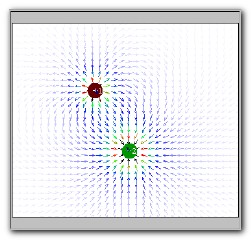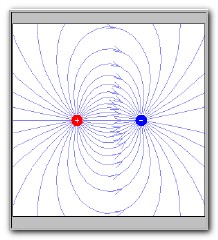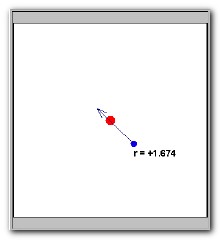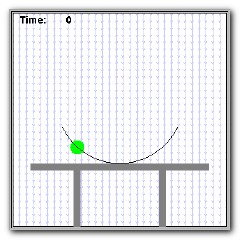Electric Fields
You know that an electric charge will experience a force from another electric charge that is placed near it (even really far away, but not quite so noticeable at large distances). In physics, each charge has a force "field" that it emits from its center that permeates all of space. The strength of that force field depends on the size of the charge on that particular particle. If we place a test charge of charge q in the field of a charged particle of charge Q, we get the electric field:

It works the same way as forces: If you have multiple charged particles, the field is just the vector sum of those fields. To better define electric fields using test charges, use the following illustrations.
Click the images below to view the animations.
Now, apply and expand some of this new understanding in the following exploration activities.
Click the image below to view the animation.
Use this exploration worksheet to organize your notes.
Click the image below to view the animation.
Use this exploration worksheet to organize your notes.
Now answer the questions below to make sure you understand the concepts.
What happens to field lines if the charge of the particle increases?
The field lines get closer together.
|
Could an electric field acting on a test particle ever be zero?
Yes, only if there are multiple charges near the test charge so that the sum of their electric fields is zero.
|



